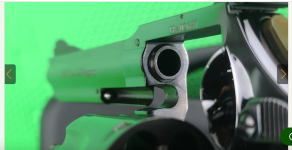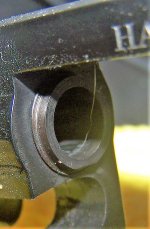Upon examining a friend's old Manurhin MR73 (real old combat model), not sure what vintage year, I was surprised to see a lot of flash burns on the forcing cone. This was verified when I observed on the sideline while he was firing the gun. Yes, a lot of blow-by flashes came out on the side. I further examined the gun and noted that the forcing cone has a flat cutout right at the 6'0 clock position, just like the SW K-frame which is known for the forcing cone to crack. SW corrected this with their newer K-frame beefing up the forcing cone by eliminating the flattened area. I am surprised that the MR73 which is touted as the toughest revolver has the same design as the vintage SW K-frame with the flatten forcing cone on the 6'0 clock position.
My question is whether Manurhin changed the design for the new MR73. Can someone who owns a newer model MR73 verify whether they made an improvement in this area ? The attached picture will show the flat cutout at 6'0 clock on the forcing cone.
My question is whether Manurhin changed the design for the new MR73. Can someone who owns a newer model MR73 verify whether they made an improvement in this area ? The attached picture will show the flat cutout at 6'0 clock on the forcing cone.
Attachments
Last edited:


